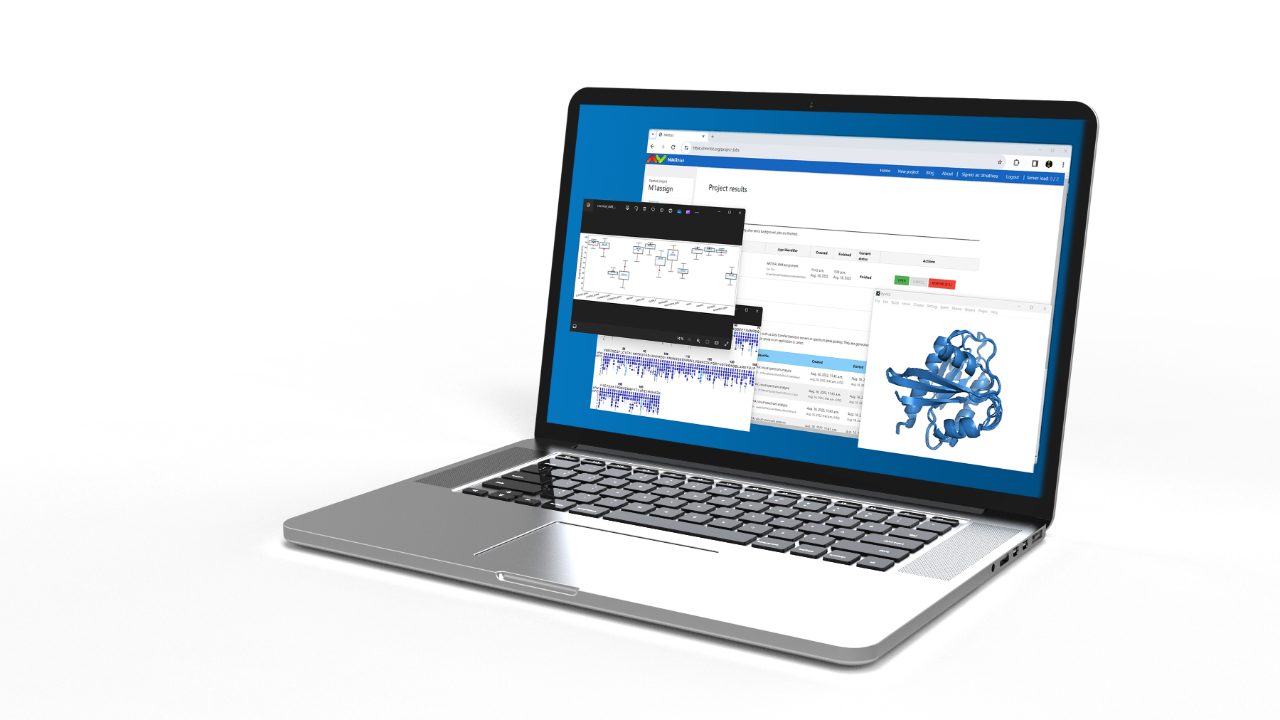

NMR for Functional & Structural Biology Research

NMR is a powerful analytical tool but how can it be used to study functional and structural biology?
In fact, there are several ways:
Determination of Molecular Structure:
NMR can be used to determine the three-dimensional structure of biological molecules. By analyzing the signals produced by different nuclei within the molecule, NMR can provide information about the distances and angles between different atoms, which can be used to determine the overall shape of the molecule. NMR is also suitable to determine structural ensembles of biomolecules which only have residual structure or a large degree of flexibility, such as (partially) disordered proteins or nucleid acids. NMR is also suitable to determine structural ensemblies of biomolecules which only have residual structure or a large degree of flexibility, such as (partially) disordered proteins or nucleid acids.
Investigation of Protein-Protein, Protein-Ligand and Protein-RNA Interactions:
NMR can be used to study the interactions between proteins and other molecules, such as small-molecule ligands. By analyzing the changes in NMR signals when a ligand is added to a protein, researchers can gain insights into the binding mechanism and the structural changes that occur upon binding.
Characterization of Dynamics and Exchange:
NMR can be used to study the dynamics of proteins and other biological molecules. By analyzing the relaxation times of different nuclei within the molecule, NMR can provide information about the rates of molecular motions, which can be related to protein function. Today NMR is widely used to study conformational and chemical exchange, occurring on various timescales. Using modern techniques, it can be used to study minor populated states, even if the occurrence is in the sub-percent regime.
Identification of Biomarkers:
NMR can be used to identify biomarkers, which are molecular signatures of biological processes or diseases. By analyzing the metabolic profiles of biological samples, such as blood or urine, researchers can identify changes in the levels of specific metabolites that are associated with particular diseases.
Overall, NMR is a versatile tool that can provide detailed information about the structure, dynamics and interactions of biological molecules, making it an important tool in molecular biology.
Why bioNMR?
In this interview series, we will explore the world of biology research using NMR technology. Experts from around the world will highlight the research they are doing in the fields of functional and structural biology and how NMR has helped shaped their careers.
Episode 1: Beyond Watson & Crick: The Nucleic Acid Dance
Interview with Hashim M. Al-Hashimi, PhD Roy and Diana Vagelos Professor of Biochemistry and Molecular Biophysics, Columbia University New York
To learn more about Dr. Al-Hashimi’s work, please visit:
www.biochem.cuimc.columbia.edu/research/research-labs/al-hashimi-lab
www.base4.bio
The Role of NMR for Disordered Proteins and Molecular Condensates
Julie Forman-Kay's research focuses on intrinsically disordered proteins, which, despite their lack of stable structures, are vital to biological processes. Her team leverages advanced NMR techniques to investigate the dynamic ensembles of these proteins and their behavior within biomolecular condensates. This research is essential for understanding how mutations in disordered regions can lead to diseases such as autism spectrum disorder. Julie’s work underscores the significance of structural biology in unraveling the mechanisms underlying protein function and pathology.


